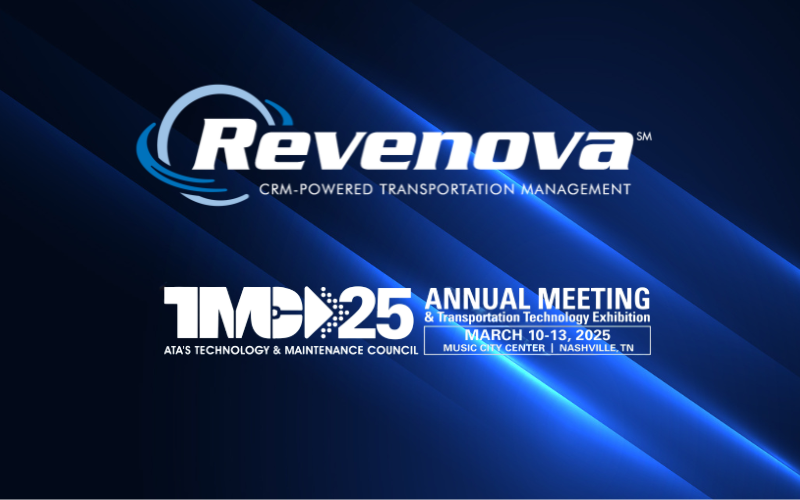
Spring into Innovation with a Modern Tech Makeover (Part II)
In Part I of this blog series we showed you why spring is the right time to assess your current technology stack, evaluate your options and make some important changes in the name of efficiency. This blog takes that idea a step further and explains the key measures you can take for the best results. We’ll also help you avoid “shiny object syndrome” in a world where new transportation, logistics and supply chain solutions are proliferating at a rapid rate.
As you read in Part I, spring is a great time to give your tech stack a once-over, assess what it is and isn’t doing well, and evaluate some new solutions, tools and/or applications that can help fill in those gaps, streamline your operations and improve efficiencies. “Seize the opportunity now and you’ll be setting your organization up for success for the rest of the year,” says Danielle Chaffin, Senior Solutions Engineer at Revenova.
 Kick off your spring cleaning project by identifying outdated or redundant systems that no longer serve their intended purpose. Be sure to evaluate your systems’ security; make sure they’re all patched and protected against evolving cyber threats; and replace any that vendors no longer support or provide patches for. This is an extremely important step to take in an environment where more supply chains are being targeted by cybercriminals.
Kick off your spring cleaning project by identifying outdated or redundant systems that no longer serve their intended purpose. Be sure to evaluate your systems’ security; make sure they’re all patched and protected against evolving cyber threats; and replace any that vendors no longer support or provide patches for. This is an extremely important step to take in an environment where more supply chains are being targeted by cybercriminals.
In its State of the Software Supply Chain report for 2024, in fact, Sonatype says the software supply chain has become a primary target for malicious actors. “As software supply chains have grown in complexity, so too have the strategies employed by attackers,” it says, “who have shifted their focus from directly targeting organizations to exploiting vulnerabilities within the broader supply chain and all of its downstream consumers.”
This trend started in the mid-2010s and isn’t expected to let up anytime soon. “These incidents underscore the need for increased transparency, accountability, and better security practices across the entire software development lifecycle,” Sonatype points out. One of the best ways to get out in front of the bad actors is by having systems in place that include strong controls and authentication protocols; security monitoring; and regular security audits.
Leading cloud-based TMS vendors like Revenova prioritize data security and recognize the critical importance of protecting sensitive logistics information. Revenova TMS provides a robust infrastructure that leverages very secure cloud environments, industry-standard encryption and rigorously-enforced data controls. Customers also get continuous monitoring and threat detection systems that proactively identify, assess and address security incidents.
Don’t Get Distracted by the Bright Shiny Objects
In today’s technology marketplace, it’s easy to be dazzled by the constant influx of shiny new tools, applications, and platforms. Innovation is essential, of course, but succumbing to the allure of every new and trendy offering can lead to a fragmented and inefficient tech stack. For this and other reasons, Chaffin always advises companies to do a thorough internal analysis before exploring the various TMS platforms on the market.
“Vendors are going to throw the shiny objects and awesome features at you and talk to you about how those tools can support different areas of your operation,” Chaffin warns. “Unfortunately, the evaluation process can become very distracting and overwhelming.”
To avoid this, she recommends looking at some of the newer features—AI, for example—individually to gain a better understanding of how the technology will fit into and support your organization’s transportation management goals. It’s also important to understand that if the underlying TMS or other system doesn’t meet your company’s needs, then all the AI in the world probably won’t ensure a good fit.
“The bright shiny objects may look cool, but you really should be making your decision based on the underlying data structure and the actual TMS functionality,” says Chaffin, who also advises companies in spring cleaning mode to talk to other technology users for advice, feedback and shopping tips. “These folks will be able to provide some good, unbiased insights that you can use to make better decisions about your own tech.”
8 Steps to Success
If you’re ready to kick off your spring cleaning exercise and need some help putting together a plan, here’s a simple roadmap you can use to get started:
Step one: Take inventory of your current software. Create a list of all software applications, cloud services, and hardware currently in use. Note the purpose of each tool, its age, and who uses it.
Step two: Talk to your team members. Conduct surveys or hold meetings to gather feedback from employees about their experiences with the current tech stack. Ask about pain points, frustrations, and suggestions for improvement.
Step three: Document your workflows, look for bottlenecks, failure points and workarounds; and identify areas that are ripe for improvement.
Step four: Review the usage data for any applications and use those insights to identify any underutilized or redundant tools. If you find any applications with overlapping functionalities, you may want to consolidate them into a single tool.
Step five: Check for security updates and make sure all systems are up to date with the latest security patches. Identify any outdated systems that should be replaced.
Step six: To reduce complexity and improve interoperability, consider standardizing on a smaller set of core tools across the organization. This will also help streamline employee training and system troubleshooting.
Step seven: Create a timeline for the changes that are going to be made and share the information with all impacted departments and team members.
Step eight: Get started!
To learn more about Revenova TMS, Request a Demo. Follow Revenova on LinkedIn, YouTube, and X for the latest updates and news about Revenova TMS, the original CRM-powered Transportation Management System.




